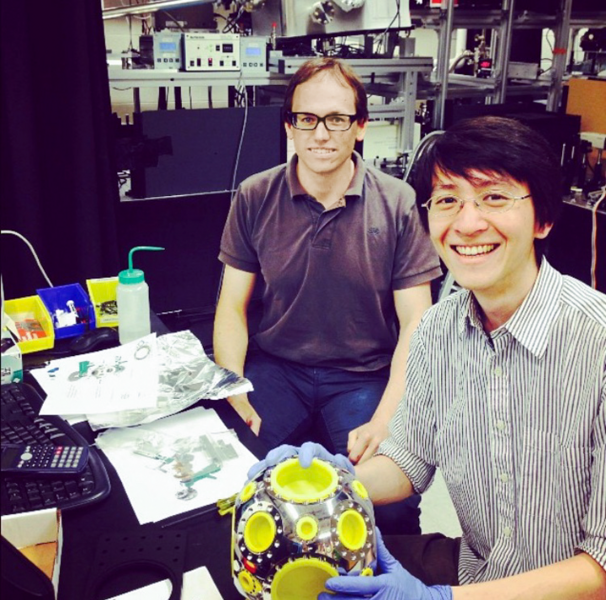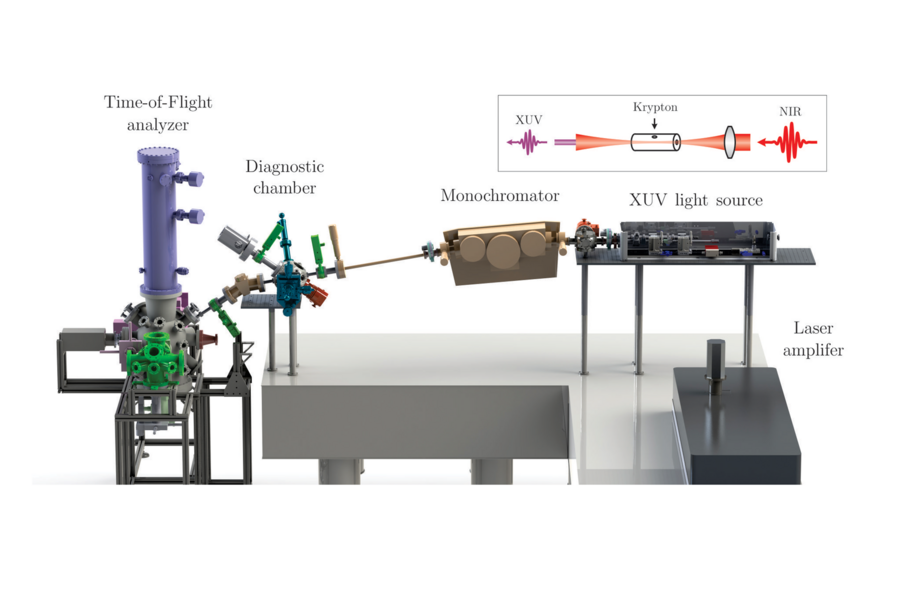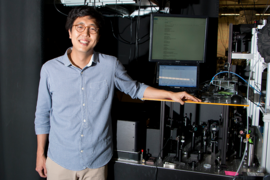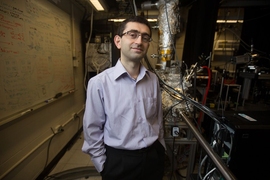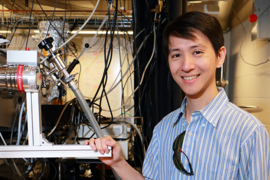A new technique developed by a team at MIT can map the complete electronic band structure of materials at high resolution. This capability is usually exclusive to large synchrotron facilities, but now it is available as a tabletop laser-based setup at MIT. This technique, which uses extreme ultraviolet (XUV) laser pulses to measure the dynamics of electrons via angle-resolved photoemission spectroscopy (ARPES), is called time-resolved XUV ARPES.
Unlike the synchrotron-based setup, this laser-based setup further provides a time-resolved feature to watch the electrons inside a material on a very fast, femtosecond (quadrillionth of a second) timescale. Comparing this fast technique on a time and distance scale, while light can travel from the moon to the Earth in roughly one second, it can only travel as far as the thickness of a single sheet of regular copy paper in one femtosecond.
The MIT team evaluated their instrument resolution using four exemplary materials representing a wide spectrum of quantum materials: a topological Weyl semimetal, a high-critical-temperature superconductor, a layered semiconductor, and a charge density wave system.
The technique is described in a paper appearing in the journal Nature Communications, authored by MIT physicists Edbert Jarvis Sie PhD ’17, former postdoc Timm Rohwer, Changmin Lee PhD ’18, and MIT physics Professor Nuh Gedik.
A central goal of modern condensed-matter physics is to discover novel phases of matter and exert control over their intrinsic quantum properties. Such behaviors are rooted in the way the energy of electrons changes as a function of their momentum inside different materials. This relationship is known as the electronic band structure of materials and can be measured using photoemission spectroscopy. This technique uses light with high photon energy to knock the electrons away from the material surface — a process formerly known as the photoelectric effect, for which Albert Einstein received the Nobel Prize in Physics in 1921. Nowadays, the speed and direction of the outgoing electrons can be measured in an angle-resolved manner to determine the energy and momentum relationship inside the material.
The collective interaction between electrons in these materials often goes beyond textbook predictions. One method to study such non-conventional interactions is by promoting the electrons to higher energy levels and watching how they relax back to the ground state. This is called a "pump-and-probe" method, which basically is the same method people use in their everyday lives to perceive new objects around them. For example, anyone can drop a pebble on the surface of water and watch how the ripples decay to observe the surface tension and acoustics of water. The difference in the MIT setup is that the researchers use infrared light pulses to “pump” the electrons to the excited state and the XUV light pulses to “probe” the photoemitted electrons after a time delay.
Time- and angle-resolved photoemission spectroscopy (trARPES) captures movies of the electronic band structure of the solid with femtosecond time resolution. This technique provides invaluable insights into the electron dynamics, which is crucial to understand the properties of the materials. However, it has been difficult to access high-momenta electrons with narrow energy resolution via laser-based ARPES, severely constraining the type of phenomena that can be studied with this technique.
The newly developed XUV trARPES setup at MIT, which is approximately 10 feet long, can generate a femtosecond extreme ultraviolet light source at high energy resolution. “XUV will be quickly absorbed by air, so we house the optics in vacuum,” Sie says. “Every component from the light source to the sample chamber is projected on the computer drawing on a millimeter precision.” This technique enables full access to the electronic band structure of all materials with unprecedentedly narrow energy resolution on femtosecond timescales. “To demonstrate the resolution of our setup, it is not sufficient to measure the resolution of the light source alone,” Sie says. “We must verify the true resolutions from real photoemission measurements using a wide range of materials — the results are very satisfying!”
The final assembly of the MIT setup comprises several emerging instruments that are being developed concurrently in industry: femtosecond XUV light source (XUUS) from KMLabs, XUV monochromator (OP-XCT) from McPherson, and angle-resolved time-of-flight (ARToF) electron analyzer from Scienta Omicron. “We believe that this technique has the potential to push the boundary of condensed matter physics,” Gedik says, “so we worked with relevant companies to achieve this spearheading capability.”
The MIT setup can accurately measure the energy of electrons with high momenta. “The combination of time-of-flight electron analyzer and XUV femtosecond light source gives us the ability to measure the complete band structure of almost all materials,” Rohwer says, “Unlike some other setups, we don’t have to repeatedly tilt the sample to map the band structure — and this saves us a lot of time!”
Another significant advance is the ability to change the photon energy. “Photoemission intensity often varies significantly with the photon energy used in the experiment. This is because the photoemission cross section depends on the orbital character of the elements forming the solid,” Lee says. “The photon energy tunability provided by our setup is extremely useful in enhancing the photoemission counts of particular bands that we are interested in.”
Stanford Institute for Materials and Energy Science Staff Scientist Patrick S. Kirchmann, an expert in ARPES techniques, says, “As a practitioner I believe that trARPES is profoundly useful. Any quantum material, topological insulator, or superconductivity question profits from understanding the band structure in non-equilibrium. The basic idea of trARPES is simple: By detecting the emission angle and energy of photoemitted electrons, we can record the electronic band structure. Done after exciting the sample with light, we can record changes of the band structure that provide us with ‘electron movies,’ which are filmed at frame rates of their natural femtosecond time scale.”
Commenting on the Gedik research group’s new findings at MIT, Kirchmann says, “The work of Sie and Gedik sets a new standard by achieving 30 meV [milli-electron-volt] bandwidth while maintaining 200 femtosecond time resolution. By incorporating exchangeable gratings in their setup, it will also be possible to change that partitioning of the time-bandwidth product. These achievements will enable long-needed high-definition studies of quantum materials with high enough energy resolution to provide profound insights."
The work was supported by the U.S. Department of Energy, Army Research Office, and the Gordon and Betty Moore Foundation.
